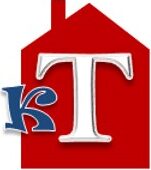Chicago, known for its rich history, vibrant culture, and stunning architecture, offers a diverse array of neighborhoods, each with its own unique character. For those looking to invest in real estate, understanding the best areas for investment can yield significant returns. This article explores some of Chicago’s most promising neighborhoods for real estate investors.
1. Logan Square
Logan Square has emerged as a hot spot for investors due to its artistic vibe, historic architecture, and growing amenities. With tree-lined streets and a mix of single-family homes and multi-unit buildings, the neighborhood caters to families and young professionals alike. The recent influx of trendy coffee shops, boutiques, and restaurants has made Logan Square increasingly attractive. The Blue Line train access also ensures quick commutes to downtown, making it a prime location for renters.
Investment Insights:
- Average Home Price: Around $470,000
- Rental Yield: Approximately 7%
- Development Potential: Ongoing developments and a burgeoning local economy.
2. Pilsen
Home to one of Chicago’s most significant Hispanic communities, Pilsen is renowned for its colorful murals and vibrant cultural scene. Investors are flocking to Pilsen as it continues to gentrify, offering opportunities in both single-family renovations and multi-family developments. The community is also known for its artistic flair, attracting creatives and young families drawn to its cultural diversity and artistic spirit.
Investment Insights:
- Average Home Price: Approximately $350,000
- Rental Yield: Approximately 6%
- Cultural Appeal: A rich blend of restaurants, galleries, and community events.
3. Bridgeport
Historically known as a working-class neighborhood, Bridgeport is undergoing a transformation, driven by its proximity to downtown and a growing community of artists and entrepreneurs. Investors are seeing potential in the area as it evolves from its industrial roots into a desirable residential neighborhood. With plenty of green spaces and a strong sense of community, Bridgeport is attracting families and young professionals alike.
Investment Insights:
- Average Home Price: About $400,000
- Rental Yield: Approximately 5.5%
- Community Growth: Ongoing investments in parks and local businesses.
4. Hyde Park
Hyde Park is famous for being the home of the University of Chicago, lending an academic feel to the neighborhood. The area is characterized by its historic architecture and cultural institutions, including museums and theaters. The demand for rental housing is consistently high due to the influx of students, faculty, and professionals, making it an attractive option for real estate investment.
Investment Insights:
- Average Home Price: Approximately $600,000
- Rental Yield: Around 5%
- Stable Demand: A constant influx of students and professionals.
5. West Loop
The West Loop is one of the fastest-growing neighborhoods in Chicago, known for its upscale dining and trendy loft conversions. With its proximity to downtown and easy access to public transit, this area is increasingly popular among young professionals looking to live close to work and have access to vibrant nightlife. The neighborhood’s transformation from industrial to residential has led to rising property values that continue to attract investors.
Investment Insights:
- Average Home Price: Roughly $800,000
- Rental Yield: Approximately 4.5%
- Market Demand: Strong interest from renters due to urban amenities.
6. South Shore
South Shore is often overlooked but is poised for revitalization as the city invests in infrastructure and community development. This lakefront neighborhood offers stunning views and an appealing suburban feel while still being close to the city. With affordable housing options and a variety of property types, South Shore presents a unique opportunity for investors looking to get in before the neighborhood fully blossoms.
Investment Insights:
- Average Home Price: Around $250,000
- Rental Yield: Approximately 7%
- Future Potential: Upcoming developments and lakefront accessibility.
Conclusion
Chicago’s real estate landscape is as diverse as its neighborhoods, offering a plethora of opportunities for investors. By targeting emerging areas like Logan Square, Pilsen, and the West Loop, investors can position themselves to capitalize on growth trends and increasing property values. Conducting thorough research and understanding local market conditions will be key to making informed investment decisions. As Chicago continues to evolve, those who invest wisely in its neighborhoods stand to reap substantial rewards. Whether you’re a seasoned investor or a first-time buyer, the Windy City’s real estate market has something for everyone.
What Type of Property are you Looking for?
